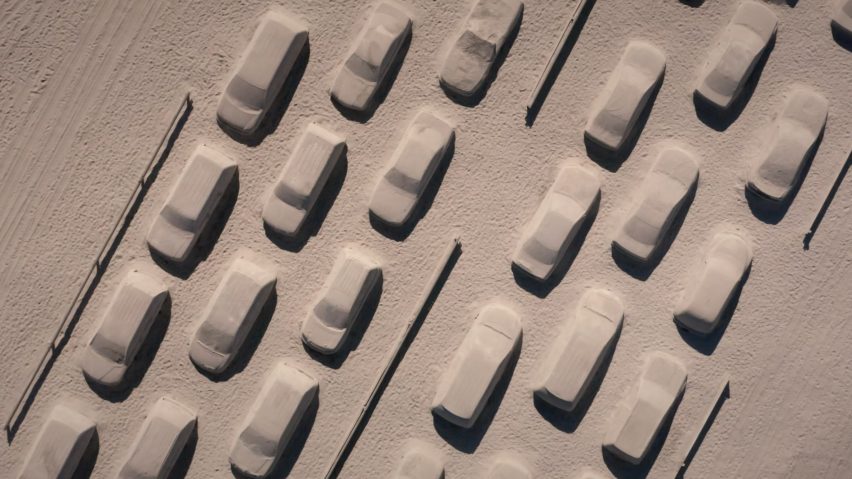
Six installations that call attention to the climate-change crisis
The United Nations announced this year that there is just over a decade to limit the effects of global warming. Here are six installations by architects, designers and artists that aim to raise awareness of the climate crisis and influence change.
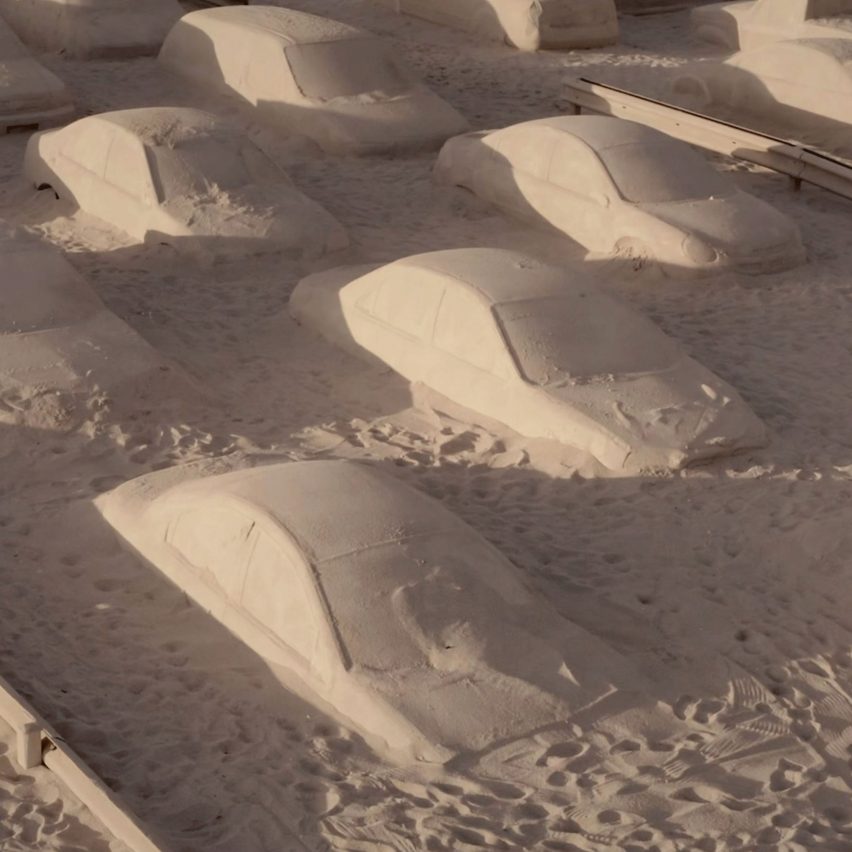
Order of Importance, Miami, USA, by Leandro Erlich
Argentinian artist Leandro Erlich created a sand-covered traffic jam on the beach in Miami city for this year's art week. Comprising sculptures of 66 cars and trucks – with some submerged so that appear as if they are under the water – it is intended to draw attention to rising sea levels.
"As an artist, I am in a constant struggle to make people aware of this reality," said Erlich, who was commissioned by the City of Miami Beach. "In particular, the idea that we cannot shrink away from our responsibilities to protect the planet."
Find out more about Order of Importance ›
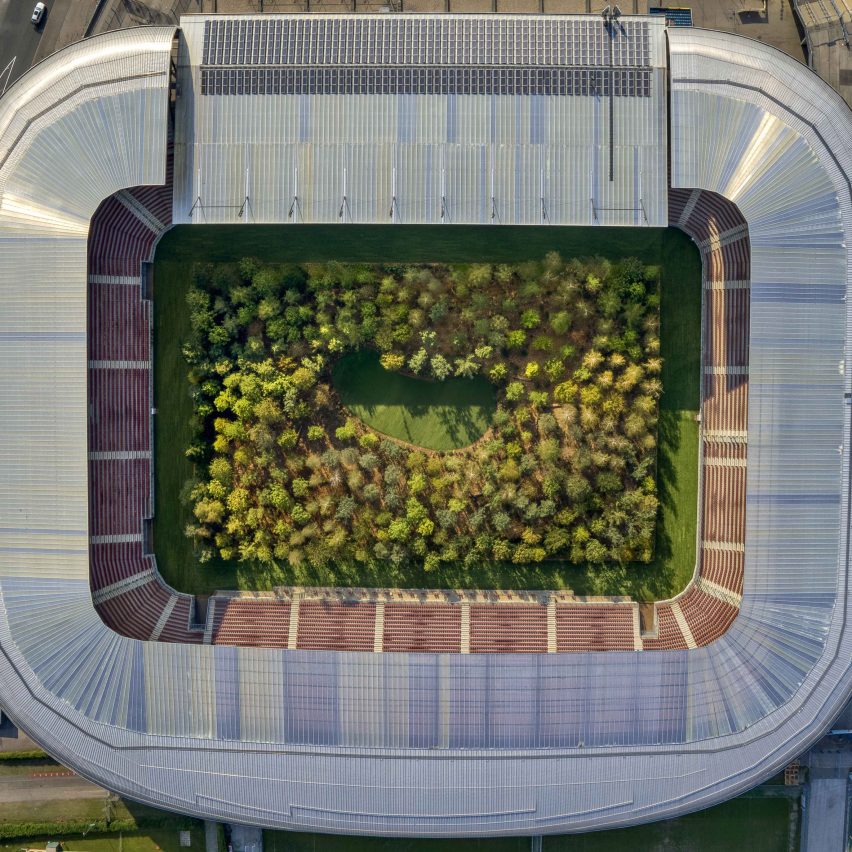
For Forest, Wörthersee Stadion, Austria, by Klaus Littmann
Swiss art curator Klaus Littmann planted a replica of a European forest in a football stadium to act as a memorial to nature. The project draws on the dystopian vision of artist Max Peintner, which imagined a world where trees would only exist like species of animals in a zoo.
"For Forest is very timely as it coincides with growing global discussions and activism linked to deforestation and climate change," Littmann told Dezeen. "It took me nearly 30 years to realise this project but never has the timing of one of my projects been so spot on."
Find out more about For Forest ›
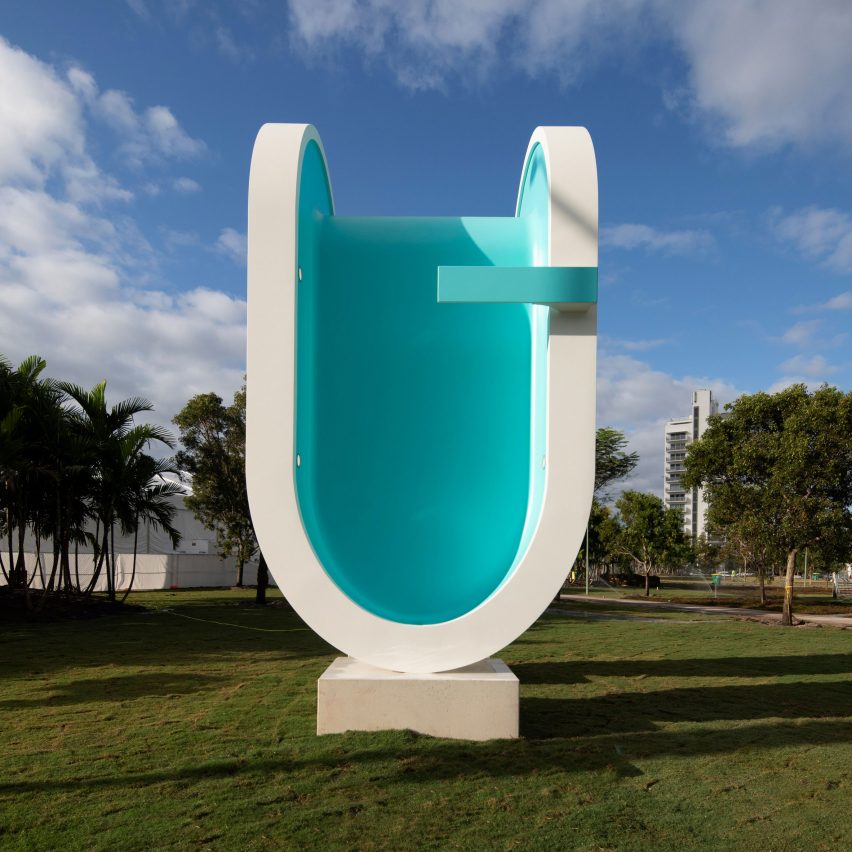
Bent Pool, Miami, USA, by Elmgreen and Dragset
Bent Pool by Berlin artists Elmgreen and Dragset is a permanent, surreal sculpture that looks like a swimming pool folded in half.
"Miami Beach is an area that has seen a rise in extreme weather and flooding; its landscape is in flux," Elmgreen and Dragset said. "Bent Pool encourages us to think about how we normally interact with our surroundings: how accessible or inaccessible they appear."
Find out more about Bent Pool ›
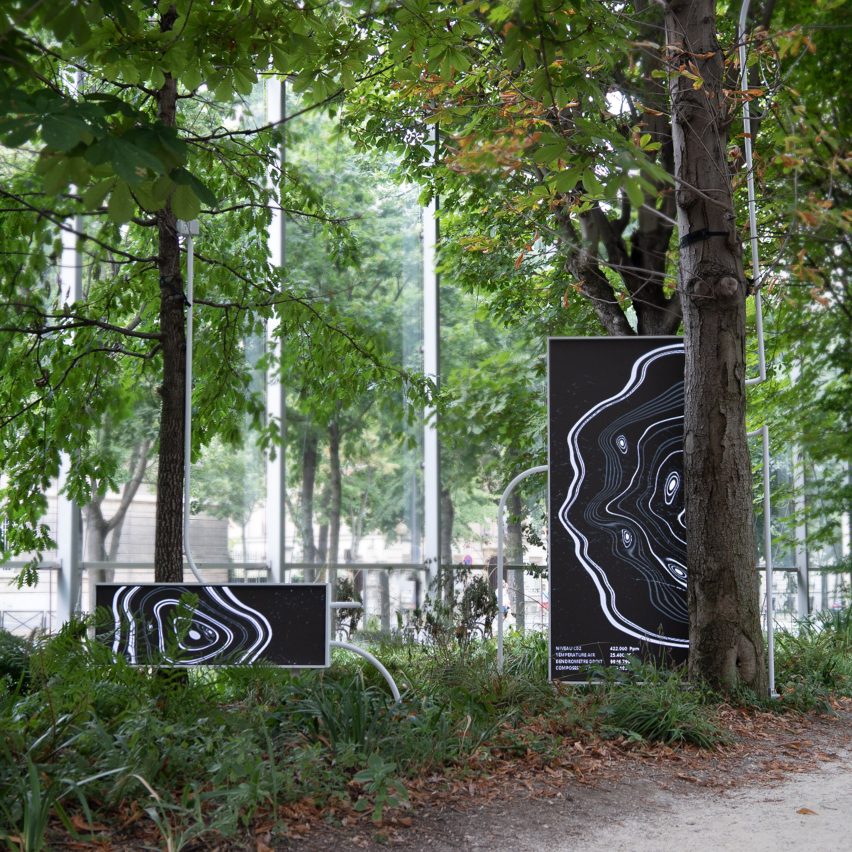
Symbiosia, Fondation Cartier, France, by Thijs Biersteker and Stefano Mancuso
Dutch artist Thijs Biersteker teamed with scientist Stefano Mancuso Biersteker to gather data about the effect of weather changes on trees, and used it to create a digital artwork within woodland.
Biersteker said the project is a chance to "give trees a visual voice about one of the most important topics of today: climate change".
Find out more about Symbiosia ›
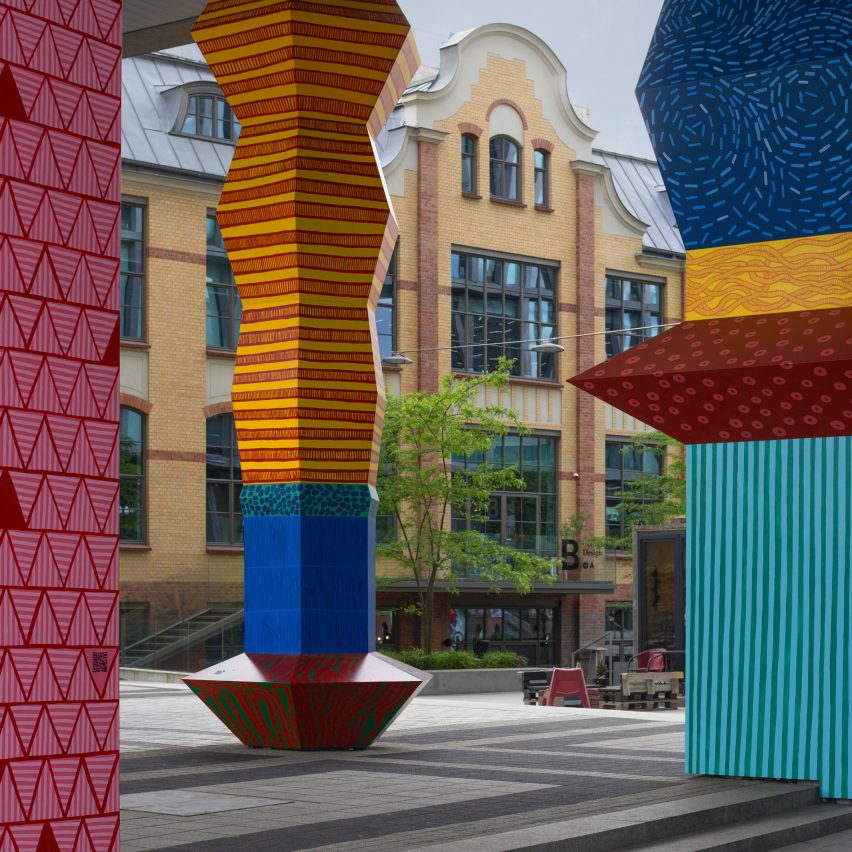
Totemy, Poznań, Poland, by Alicja Biała and Iwo Borkowicz
Designer Alicja Biała and architect Iwo Borkowicz similarly used climate-change data to form the eye-catching Totemy installation, composed of colourful columns that represent different statistics installed beneath MVRDV's Bałtyk tower in Poznań, Poland.
"We wanted to address the public at large, and at an everyday level," Biala said. "Passersby on the street and tram will catch out of the corner of their eye a flash of strong colours and be reminded of the current state of our world."
Viewers were able to access these explanations — and links to the' sources — by scanning a QR code on each sculpture.
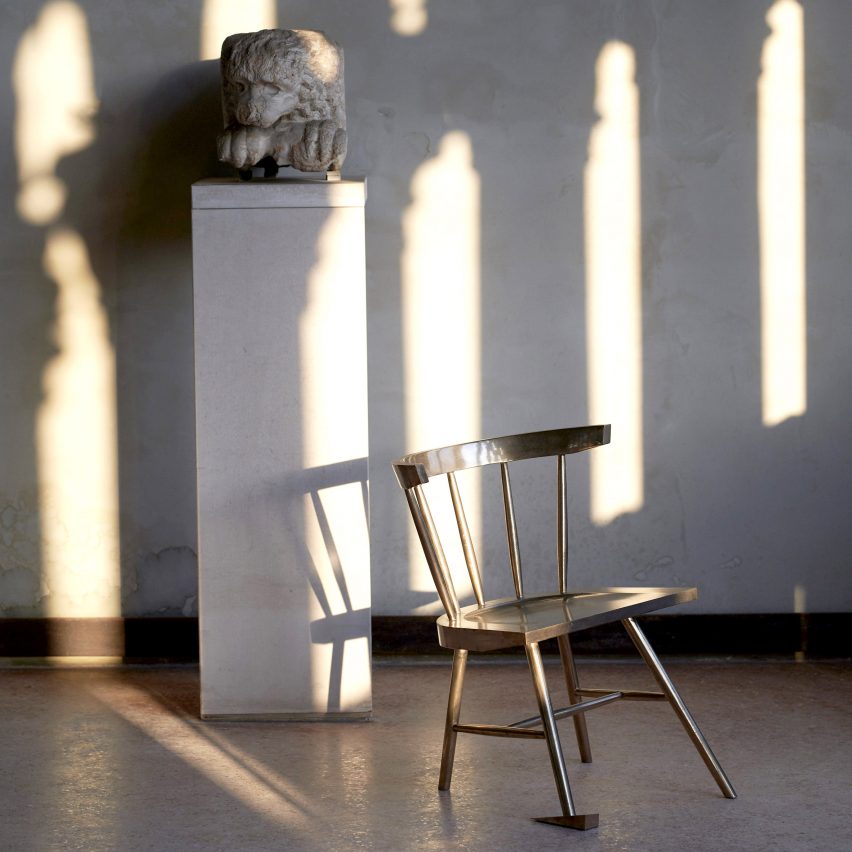
Alaska, Venice Art Biennale, Italy, by Virgil Abloh
For Carpenters Workshop Gallery's exhibit at Venice Art Biennale, designer Virgil Abloh presented furniture items chopped off at different points so they look like they are sinking into the floor.
Abloh intended the pieces to encourage viewers to think about the issue of rising sea-levels, with Venice already prone to flooding, and the effect of climate change on the planet.